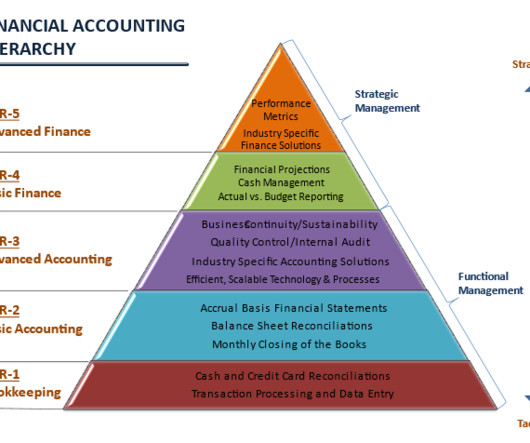Financial Accounting Hierarchy - By JP Puchulu
Boston Startup CFO
APRIL 3, 2023
In this tier, a double-entry accounting system is employed to ensure the accurate recording of all transactions. This includes managing invoices, receipts, and payments, as well as reconciling bank statements. A disorganized bookkeeping system causes the rest of the financial accounting hierarchy to be unsound.












Let's personalize your content